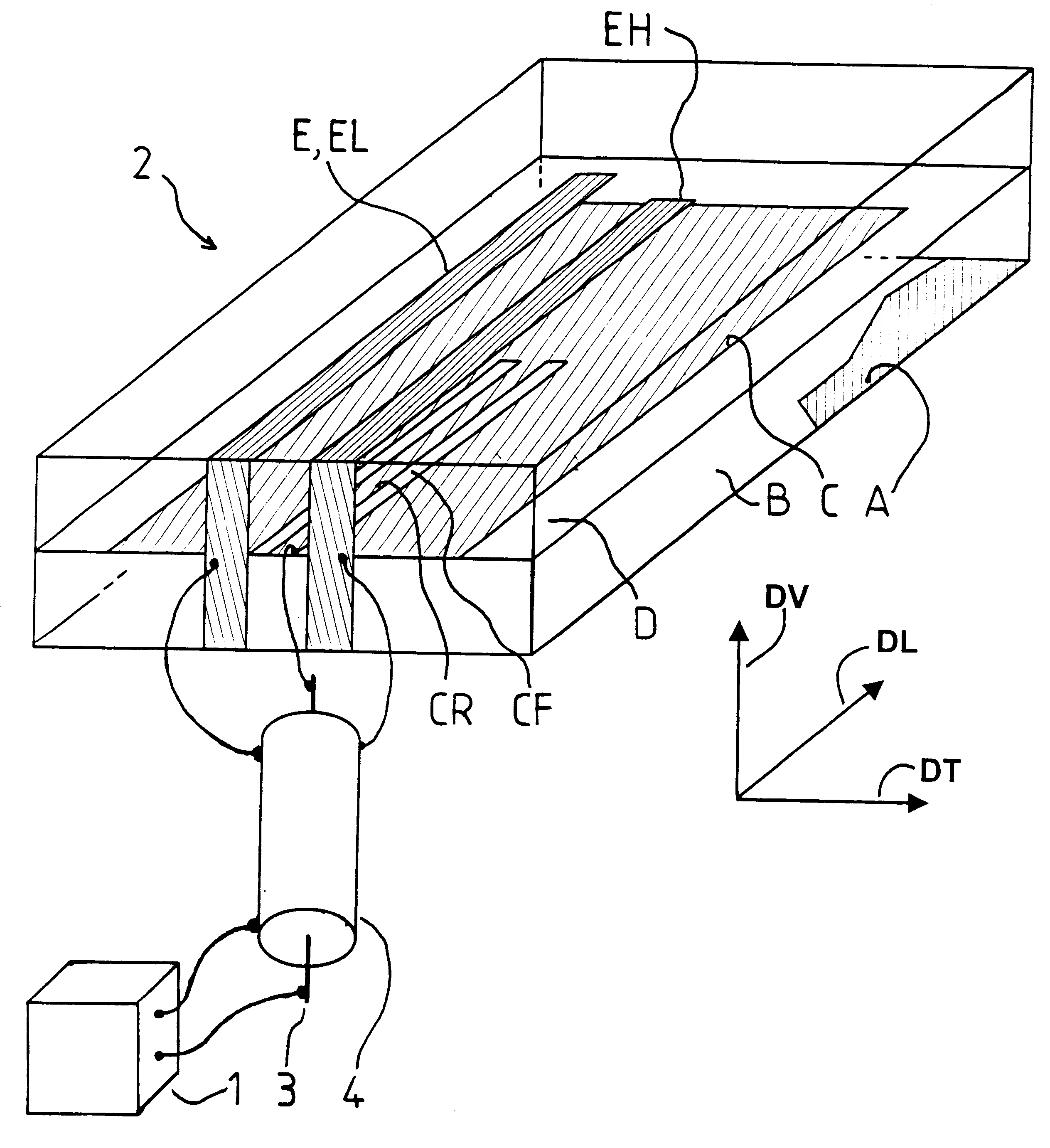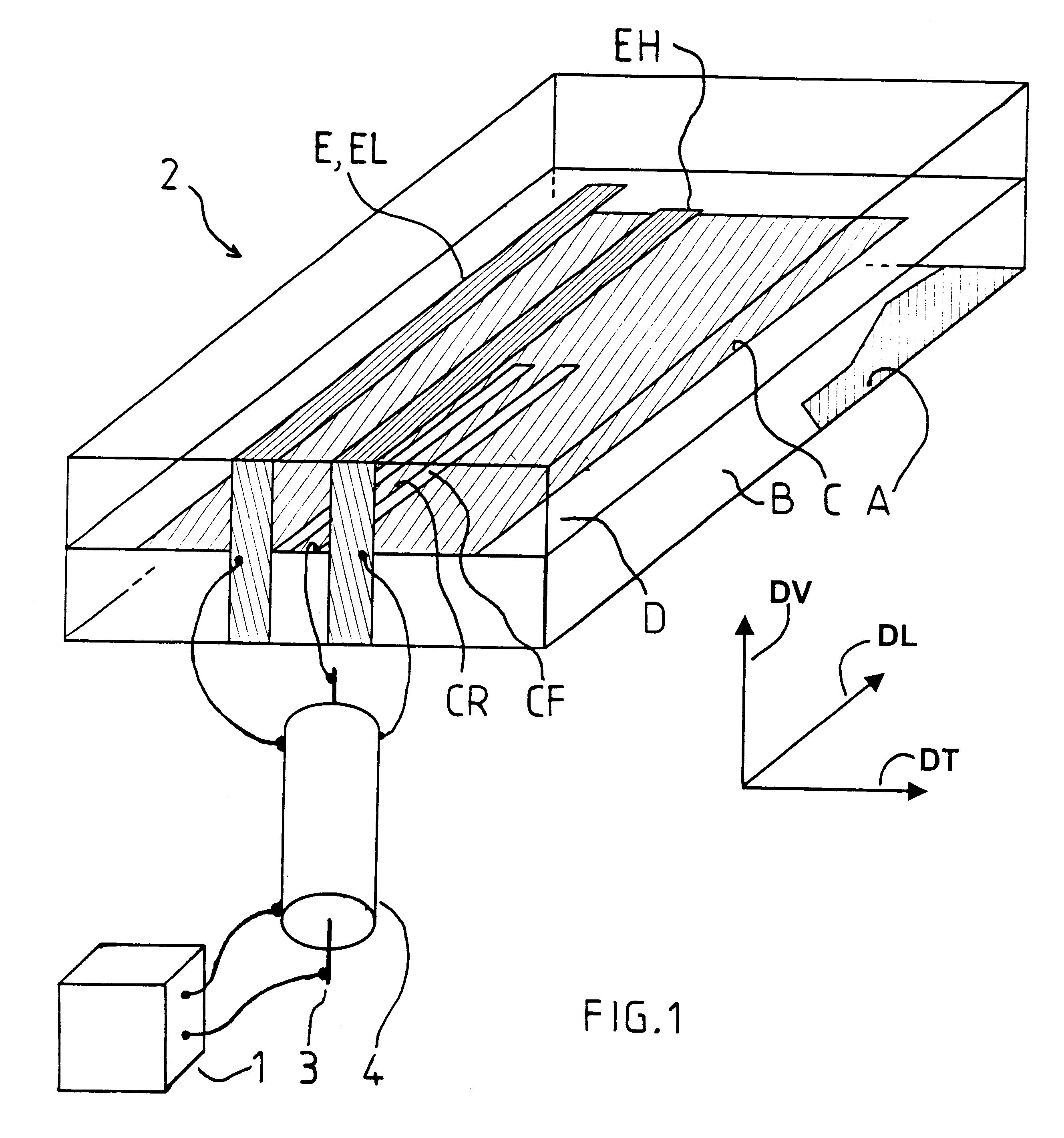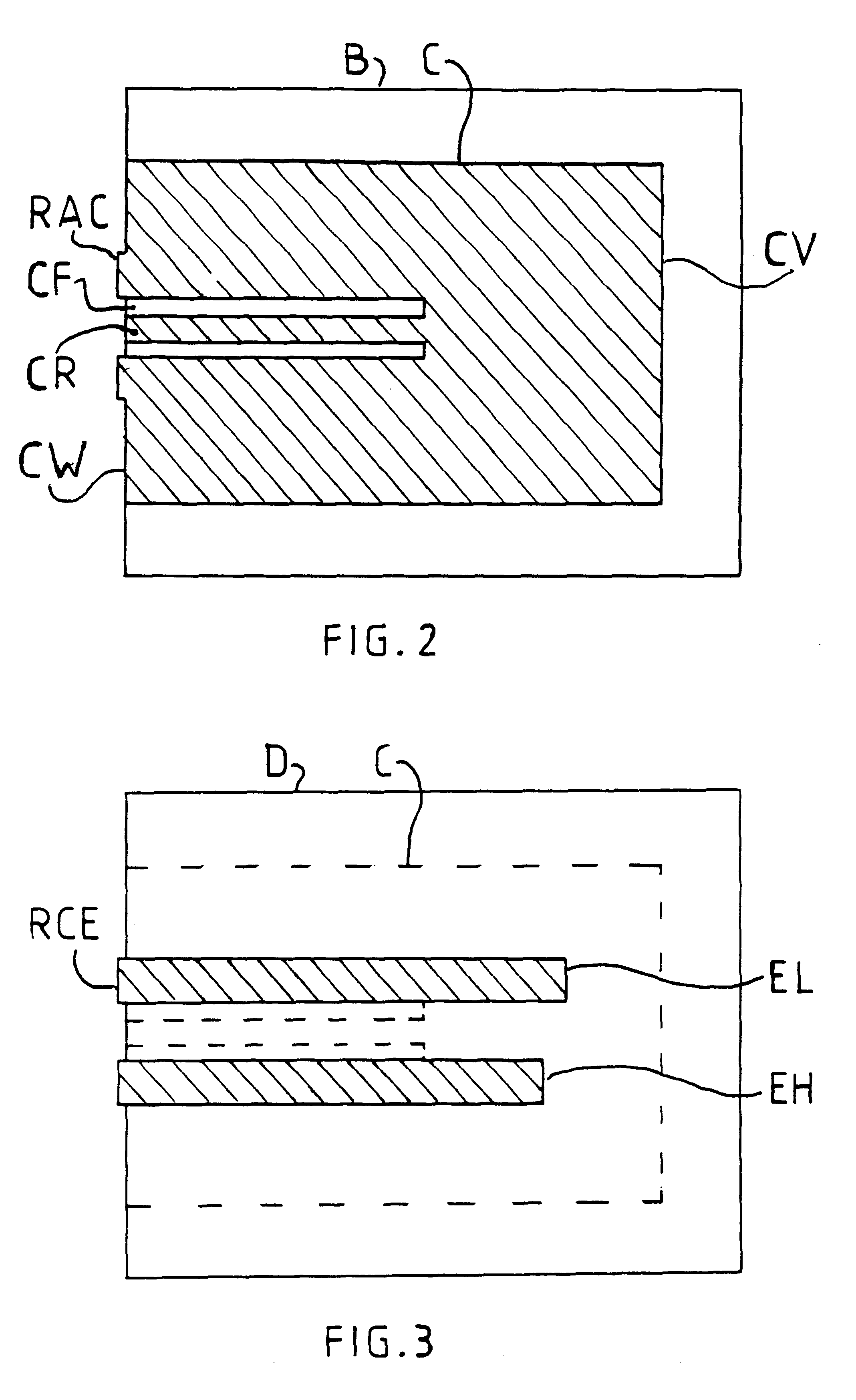Antenna with stacked resonant structures and a multi-frequency radiocommunications system including it
a technology of stacked resonant structures and antennas, applied in the direction of resonant antennas, substantially flat resonant elements, radiating element structural forms, etc., can solve the problem of high fabrication cos
- Summary
- Abstract
- Description
- Claims
- Application Information
AI Technical Summary
Benefits of technology
Problems solved by technology
Method used
Image
Examples
Embodiment Construction
In the figures, thin metal layers on the surface of dielectric layers are shaded. In FIG. 1, to simplify the drawing, the dielectric layers are represented as if they were transparent, in order to show the underlying layers, and the shading representing the bottom conductive layer is limited to part of that layer.
Referring to FIG. 1, three mutually crossing axes respectively constitute a longitudinal axis DL, a transverse axis DT and a vertical axis DV of an antenna and the longitudinal and transverse axes are horizontal axes. The above terminology is employed to facilitate the description and is without regard to the direction of the gravitational field. The longitudinal axis has a forward direction, which is that of the arrow DL, and a retrograde direction opposite the forward direction. The antenna includes a plurality of layers A, B, C, D, E, forming a succession in the vertical direction. Each layer, such as the layer C, has an area extending in said direction DL of the longitu...
PUM
 Login to View More
Login to View More Abstract
Description
Claims
Application Information
 Login to View More
Login to View More - R&D
- Intellectual Property
- Life Sciences
- Materials
- Tech Scout
- Unparalleled Data Quality
- Higher Quality Content
- 60% Fewer Hallucinations
Browse by: Latest US Patents, China's latest patents, Technical Efficacy Thesaurus, Application Domain, Technology Topic, Popular Technical Reports.
© 2025 PatSnap. All rights reserved.Legal|Privacy policy|Modern Slavery Act Transparency Statement|Sitemap|About US| Contact US: help@patsnap.com



